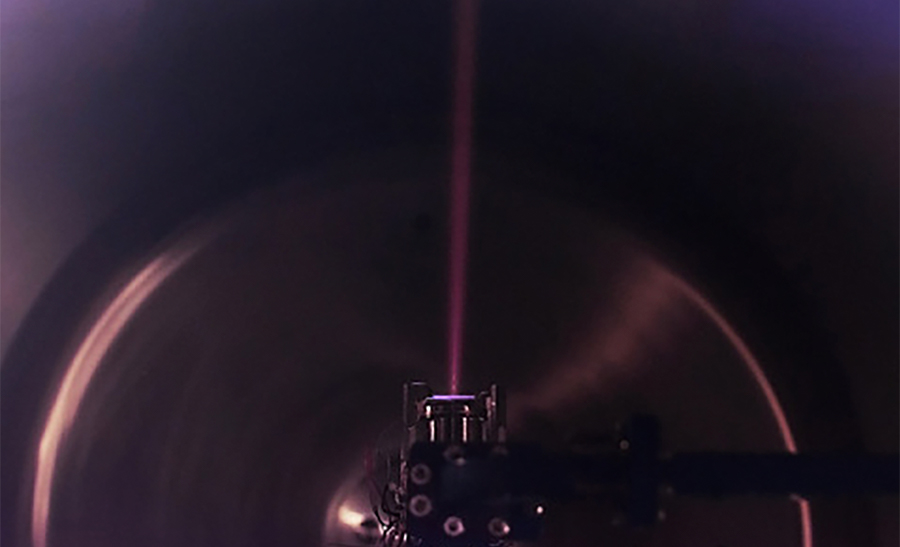WASHINGTON — In-space transportation company Momentus announced March 31 it has successfully started tests of the propulsion system on its Vigoride tug launched earlier this year.
The company said it completed an initial test sequence of the Microwave Electrothermal Thruster (MET) on its Vigoride-5 vehicle launched in January on SpaceX’s Transporter-6 rideshare mission. The MET uses microwaves to turn water into plasma to generate thrust.
Momentus provided few technical details about the performance of the thrusters in those tests, but company executives said in an interview that the thrusters performed as expected. “All the telemetry looks just like it did on the ground for all the ground tests, so everything looks good,” said Rob Schwarz, chief technology officer.
He described the tests as running the thruster at full power in short bursts. The company will ramp up the length of the tests ahead of Vigoride-5’s first major maneuver, to circularize its orbit for the deployment of a cubesat by Singapore-based Qosmosys. That maneuver will take place over the next couple of weeks, said John Rood, chief executive of Momentus, although he cautioned that schedule is subject to change.
“The whole Vigoride-5 mission is a demonstration mission. The primary objective is to demonstrate the performance and learn from how it’s performing,” he said. “We’re not going to rush things.”
Vigoride-5 will then remain in that orbit for at least six months for tests of a hosted payload from Caltech to demonstrate space-based solar power technologies. Rood said those in-orbit demonstrations could be extended for up to two years, after which Vigoride-5 will use its thruster to lower its orbit.
Those tests come as Momentus prepares to launch its next vehicle, Vigoride-6, on SpaceX’s Transporter-7 rideshare mission in April. Vigoride-6 has the same MET thruster design, which is also being incorporated onto Vigoride-7 launching in the fall.
Vigoride-6 will deploy two cubesats for NASA’s Low-Latitude Ionosphere/Thermosphere Enhancements in Density (LLITED) mission to study conditions in the upper atmosphere, which Schwarz said will require the vehicle to perform a “pretty big” inclination change using its thrusters. “It’s going to be a pretty substantial fraction of the full capability of the Vigoride bus to take them to where they need to go.”
Momentus is working on a new generation of the MET system that will increase the efficiency of the engine and potentially extend its lifetime as the company develops versions of Vigoride that can be refueled and reused in orbit. “But this engine is pretty well suited for our uses now,” he said.
The MET test was the culmination of overall testing and commissioning of Vigoride-5. “The MET is the last thing in the commissioning chain because it relies on everything upstream of it,” Schwarz said. “When it finally happened, it was a huge moment, even bigger than the launch day.”
Rood recalled cheers in the control room as telemetry from the thruster test arrived. “I was happier for the team than I was for the overall event,” he said. “Some of them are young people and they’re just thrilled by the experience. Some of the old guys like me are pretty thrilled, too.”
